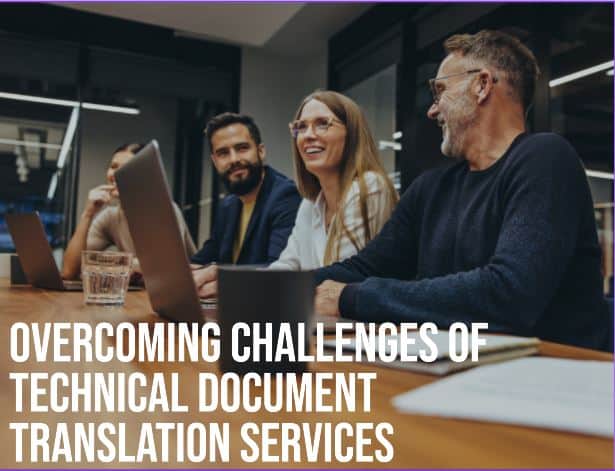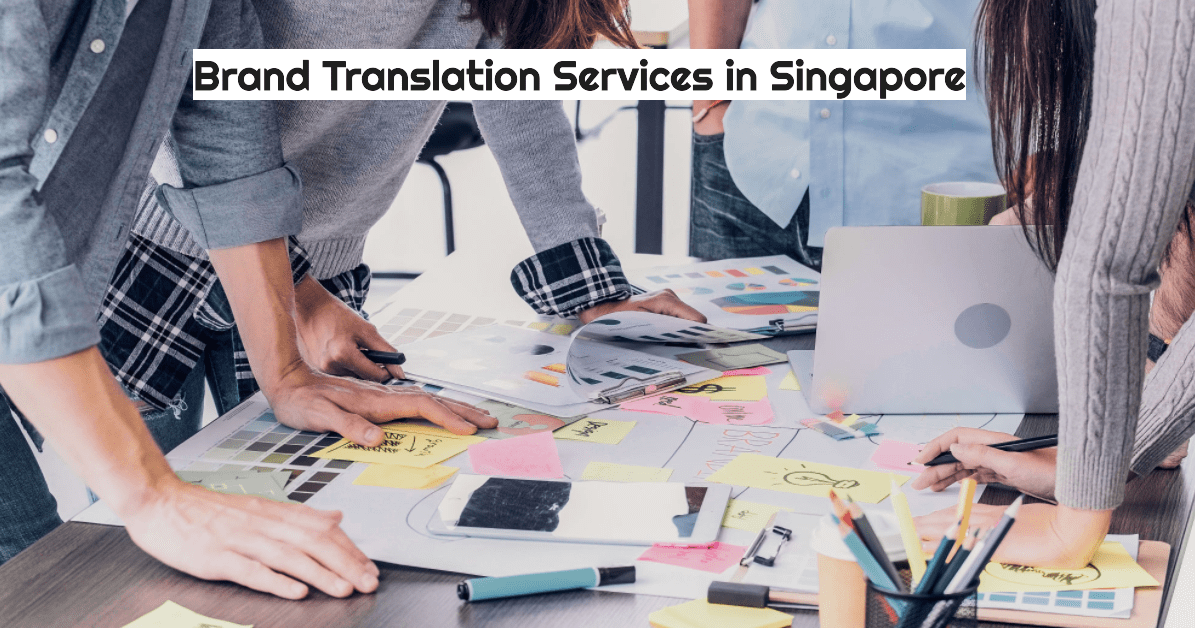Importance of Technical Document Translation Services
Technical documents translation service is essential for businesses in various industries, including engineering, science, medicine, and technology.
These documents can include product manuals, user guides, safety instructions, and technical reports.
As can be clearly seen, they allow effective communication with customers, suppliers, and stakeholders in different languages and regions.
In essence, technical documents are indispensable for businesses with a global outreach.
Technical document translation service ensures that the information in these documents is faithfully translated from the source language to the target language, enabling non-native speakers to comprehend and make use of technical goods, services, and procedures.
This is particularly important in industries such as medicine and engineering, where the incorrect interpretation of technical documents could have severe consequences, including lawsuits and accidents.
Overview of the Main Challenges of Technical Translation Service
When it comes to professional technical translation services, there are many challenges indeed, mainly because they contain specialised terminology and complex concepts that require a high level of understanding.
Technical translators must convey the intended meaning of the source text in any industry or field and to do that, they must possess a deep understanding of the target language.
The formatting and layout requirements for technical documents are also special, and the use of jargon and acronyms can make it very difficult for non-specialists and the general public to understand them.
Additionally, technical documents may need to comply with specific regulations, standards, and legal requirements in different regions and industries.
These factors can significantly impact the translation process, as translators must ensure that the translated content meets all necessary regulations and standards.
Thus, technical translators must ensure that they possess the necessary skills and requisites in order to translate technical documents accurately, completely and flawlessly.
Challenges of Technical Document Translation Services
In this article, we will discuss the challenges involved in technical document translation and strategies for overcoming them.
We will also outline best practices for technical document translation that businesses and translators can follow to ensure accurate and effective communication so that all stakeholders will come to a common agreement.
- Definition of technical documents
Firstly, we need to define what technical documents are. Simply speaking, they refer to any text that conveys technical information related to a specific field or industry. These documents can include user manuals, technical reports, product specifications, scientific papers, and safety instructions.
- Types of technical documents
There are various types of technical documents, and each requires a different approach to translation. For further illustration, some common types of technical documents include:
- User manuals – these provide instructions on how to use a product or service.
- Technical texts and reports – these document the results of scientific research or experiments, which may be required for patent translation or bidding for governmental and private projects. These tend to be highly technical.
- Safety instructions – these provide information on how to use a product or service safely.
- Product specifications – these provide detailed information on the features, functions, and performance of a product.
- Scientific papers – these communicate research findings and scientific or technical knowledge, so as to enhance understanding between the scientific community or the general public.
- Explanation of the unique challenges they pose for technical translators
Technical documents present unique challenges for translators, as they contain specialised terminology, complex concepts that require precise rendering into other languages, and specific formatting and layout requirements, as previously mentioned.
Additionally, translators must have a deep understanding of the subject matter and must be able to convey the information accurately and effectively using industry-specific terms.
How does the technical translator convey complicated and challenging ideas simply so that people without a technical background can understand his points?
What kinds of real-life examples and comparisons can he use to enhance understanding?
Strategies for Overcoming Technical Document Translation Challenges
We now have a clear knowledge of the difficulties that arise while translating technical materials, so let’s look at some solutions.
- Creating a translation glossary
Since the use of technical terms is pervasive, one of the most important tools for any technical document translator is a glossary of terms. The important thing is to have a centralised resource that defines the technical vocabulary used in the text, whether it is a straightforward spreadsheet or a more complex database. This resource includes words or phrases that are repeated frequently throughout the entire document and makes sure that their translations are consistent. It can also be shared with subject matter experts for review and input and saves time for the translator, who can quickly reference the glossary instead of having to research each technical term every time it appears in the document, especially when it comes to the terms that keep repeating and are very similar. Some translators also use terminology management software to further streamline the process.
- Collaborating with subject matter experts
Technical document translation calls for not only language proficiency but also a thorough knowledge of the subject area. Subject matter experts (SMEs) can help in this situation. SMEs are experts in their fields, such as those who possess engineering, medical and legal knowledge, and they can offer important context for the technical ideas covered in the document.
- Using translation memory and CAT tools
Translation memory (TM) is a tool used by professional translators to store previously translated text segments, called “translation units,” for future use. When a similar text segment appears in a new document, the translator can reference the TM to see if a similar translation has already been done, saving time and ensuring consistency across documents. Computer-assisted translation (CAT) tools, such as SDL Trados or MemoQ, combine TM with other features such as terminology management and quality assurance checks, making them powerful tools for technical document translation.
- Keeping abreast on market trends
Technical industries are constantly evolving, and new terms and concepts are regularly introduced. To ensure they can faithfully interpret technical texts, translators must be technically competent and keep up with these advancements. This can be done through attending industry conferences, reading technical journals, and participating in online forums and discussions.
- Hiring professional translation company with technical expertise
Finally, one of the most important strategies for overcoming technical document translation challenges is to hire professional translation company such as WhizWordz International with technical expertise. Professional translators possess the linguistic proficiency and subject-matter knowledge necessary to produce translations that are precise and of the highest calibre. Finding a translator who has expertise translating technical materials of a comparable nature and who has undergone training or certification in translation is crucial.
- Best practices for technical document translation
Technical document translators should adhere to a number of best practices in addition to the previously mentioned approaches to ensure the best results.
- Research and preparation
Research the subject and familiarise yourself with the vocabulary and concepts being presented before starting the translation. This can include reading technical documentation, researching online, and consulting with SMEs.
- Review and quality assurance
A second person, possible an editor, should check the translation after it is finished, and this person must possess technical knowledge of the subject. This review ensures that the translation is accurate and meets the technical standards of the industry. Quality assurance checks should also be performed to ensure consistency in terminology, formatting, and style.
- Contextual understanding
Translators of technical documents must have a thorough awareness of the setting in which the document will be used. This includes understanding the audience, the purpose of the document, and the cultural and linguistic nuances of the target language.
- Communication with clients and stakeholders
Effective communication with clients and stakeholders is critical for technical document translation. All parties involved must be aware of each other’s demands and expectations as well as the linguistic and technical difficulties that must be overcome during the translation process.
Technical Document Translation Service in Singapore
It is essential for businesses to prioritise technical document translation and recognise its importance in today’s globalised world.
By investing in high-quality translation services, businesses can avoid costly mistakes and improve their overall communication and reputation.
Technical document translation is a vital aspect of modern business and requires careful consideration and attention to detail.
It is crucial for businesses to work with experienced translators who understand the unique challenges posed by technical documents and have the skills and expertise to overcome them.
By prioritising technical document translation, businesses can improve their communication, reduce errors, and ensure their success in today’s global market.
Technical Translation Service Company in Singapore
Technical Translation Service Company in Singapore
In conclusion, technical document translation is a critical task that requires specialised skills and expertise.
It is essential for businesses to ensure that their technical documents are accurately translated to avoid miscommunications and errors that could lead to significant consequences.
As we have seen, technical document translation poses several unique challenges, including technical terminology, formatting and layout, jargon and acronyms, the need for accuracy, and cultural and linguistic differences.
However, there are a number of ways that translators can employ to get past these difficulties, such as putting together a glossary of technical terms, working with subject matter experts, utilising translation memory and CAT tools, keeping up with market developments, and working with qualified translators who have technical knowledge.
Best practices for technical document translation include research and preparation, review and quality assurance, contextual understanding, and communication with clients and stakeholders.
Technical translators must guarantee that technical documents are correctly translated and satisfy the demands of the target audience by adhering to these best practices.




